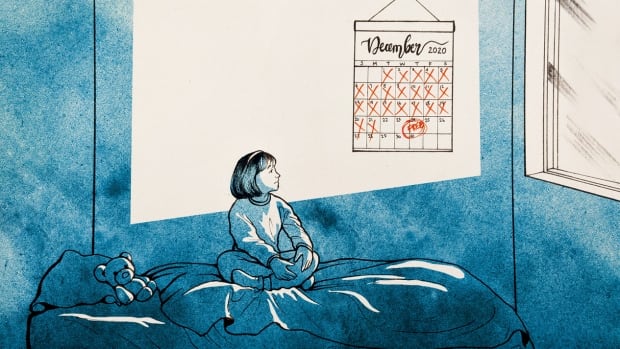

This opinion piece is by Helen Tang, a third-year medical student at the University of Saskatchewan, who is making contact tracing calls.
For more information about CBC’s Opinion section, please see the FAQ.
Working in public health, I have seen how the financial, emotional and mental burden on COVID-19 patients and their families often surpasses the physical manifestations of the virus.
I am a senior medical student working in Saskatchewan to conduct those initial contact-tracing phone calls and investigations. My time here has been anything but easy because of the complexity and consequences of quarantine.
When someone has COVID-19 or is known to have been at high risk of picking up the virus, known as a “close contact,” they must isolate for several days.
When the close contact is a household member, there are many ways this can play out. The person infected with the virus can isolate from the rest of the family easily if they have their own bedroom and bathroom.
But for many individuals and families, self-isolation is a privilege that cannot be afforded or easily undertaken.
I would not be surprised if in a few months or years, we swapped the COVID-19 pandemic for a mental health one without being creative about ways to think upstream and prevent this.– Helen Tang
For young children and homes without adequate space, isolation is difficult or impossible. In this situation, the household has to isolate as a whole. This means that the countdown after exposure for those who are close contacts in the household does not start until after the person who has the virus is no longer deemed infectious. This can result in up to a 28-day isolation for some household members.
Some close contacts of positive cases I’ve spoken with were already under isolation for being close contacts to other cases. When I phoned to notify them of a new positive COVID-19 case in their home, I had to extend the isolation of household members, often by several weeks.
Undoubtedly, these public health measures create challenges for families.
I have spoken to many parents of children with COVID-19. Some families live in crowded situations, with two or more household members sharing a room. Many parents ask, in exasperation, “How can my child isolate when there are so many people in the room?”
I don’t have good answers; I could only encourage the child to stay in one part of the room, a challenging ask for young ones. Often, I heard the sound of siblings playing in the background, blissfully unaware that they were due for nearly a month of quarantine. These situations saddened me because I could only imagine how confused and lonely the children in isolation must feel.
A COVID-19 diagnosis can also cause financial stress for households. Parents and caregivers of young children with COVID-19 tell me that they are worried they will lose their job if they ask for more time off. Hearing their stories made me upset, as many cases were close contacts to individuals who chose to attend unnecessary large gatherings or sporting events. It made me think, “Was that one hockey game worth it for another family to lose their income?”
Some individuals were only mildly ill or asymptomatic when they were tested, so they did not isolate after testing. These individuals went on to get haircuts, play sports and see friends. A few days later, they would receive a phone call from me notifying them they have COVID-19. In these conversations, all I could think of was the potential transmission that could have occurred, the rising cases in the upcoming days, and the added strain to our health-care system.
Our collective intention to stay home may be the best we can do to alleviate the hardships for those who cannot as easily protect themselves.– Helen Tang
I worry for the mental health of our children. When I phoned the parents or guardians of children who were positive, many were already self-isolating because someone on their sports team or in their class had COVID-19. My phone call was the harbinger of bad news, extending their quarantine even further. No one, especially children who are in the peak of their social and mental development, is meant to sit in a room for a month.
I would not be surprised if in a few months or years, we swapped the COVID-19 pandemic for a mental health one without being creative about ways to think upstream and prevent this. When we emerge from the pandemic, it will be crucial to offer support, such as providing free or affordable counselling, training more physicians in mental health and teaching children coping strategies in schools.
Though I understand the work I am doing is important and necessary, I believe further upstream measures would be best to prevent disease transmission. These include policies that temporarily close non-essential businesses, gyms and restaurants. Implementing these restrictions could significantly decrease the amount of cases and contacts, thereby alleviating the social fatigue of COVID-19.
The agony and anxieties expressed by the families can also be avoided by people in our community making proper choices. These choices include limiting our social interactions, mask wearing, hand hygiene and avoiding unnecessary outings. Our collective intention to stay home may be the best we can do to alleviate the hardships for those who cannot as easily protect themselves.
This column is part of CBC’s Opinion section. For more information about this section, please read this editor’s blog and our FAQ.
Interested in writing for us? We accept pitches for opinion and point-of-view pieces from Saskatchewan residents who want to share their thoughts on the news of the day, issues affecting their community or who have a compelling personal story to share. No need to be a professional writer!
Read more about what we’re looking for here, then email sask-opinion-grp@cbc.ca with your idea.












